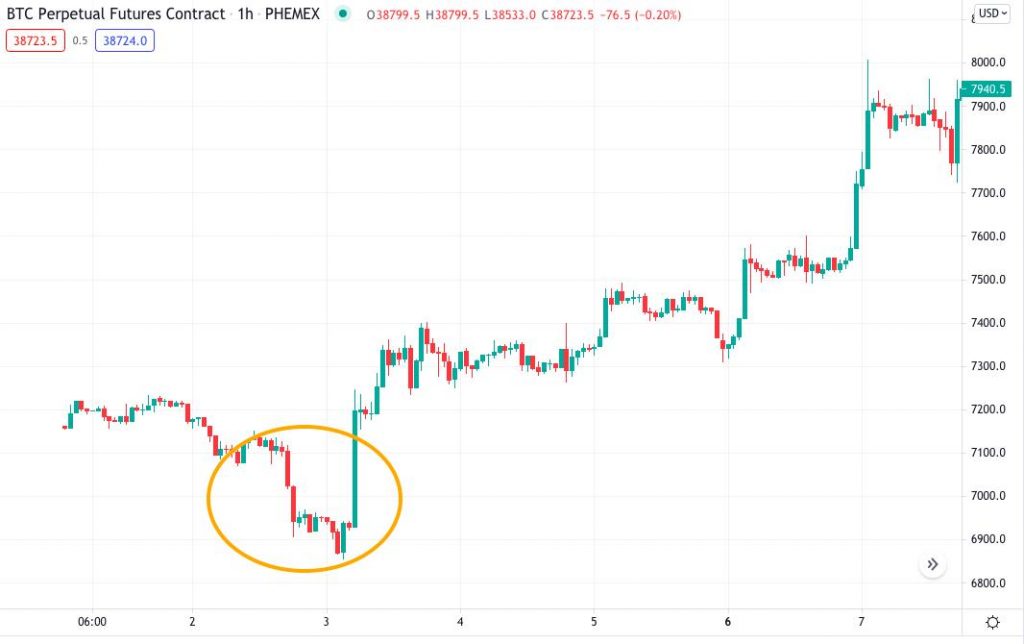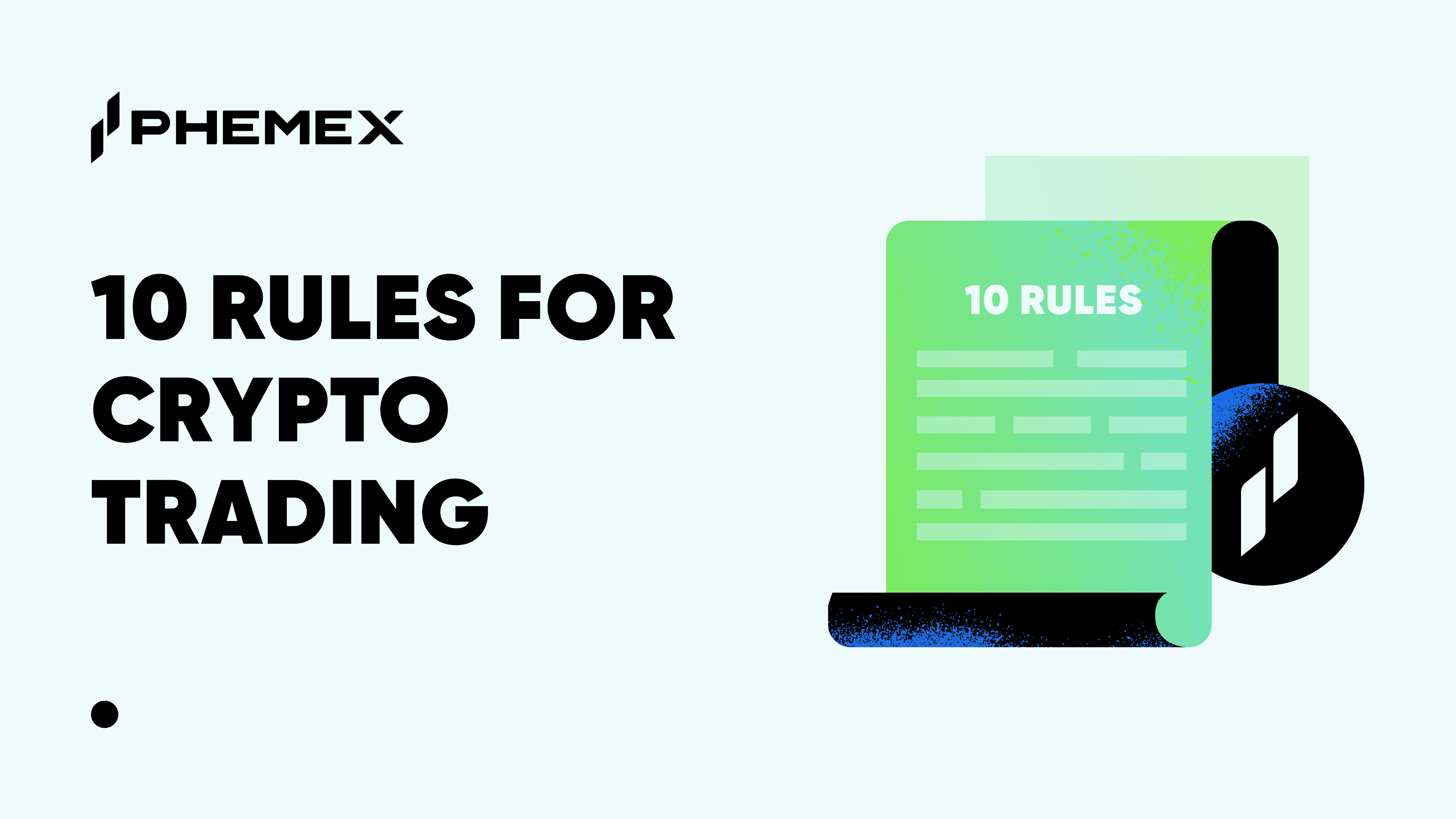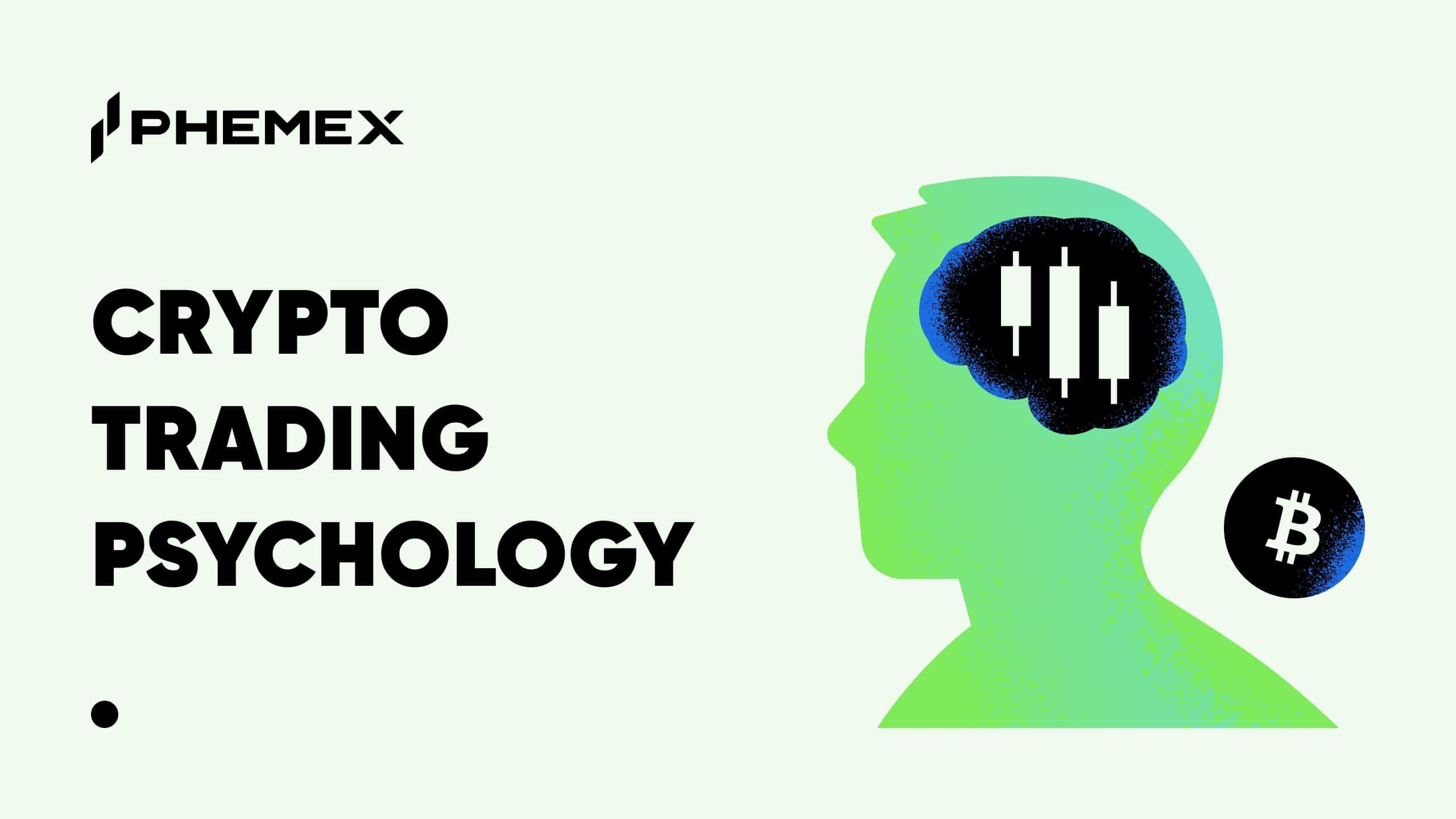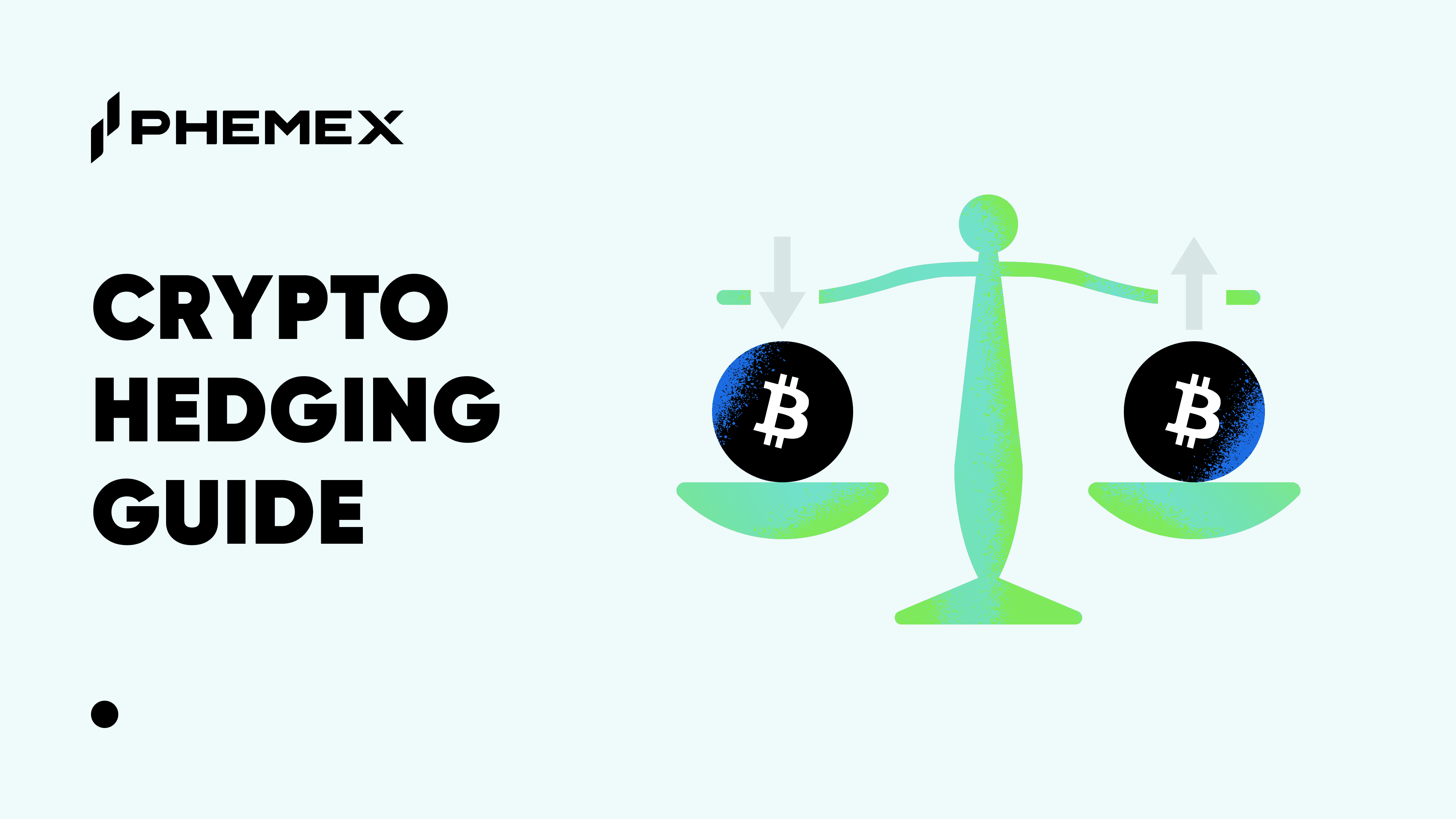Summary
- Stop-loss hunting occurs when market participants aim to buy into a token at a price where many stop-loss levels have been set and triggered.
- It is likely that more experienced or institutional traders are hunting stops on retail traders.
- There are many ways for stop hunters to see you losses. They may actually have access to the information from the market-maker; or their algorithms already have a clear idea of where the majority of stop-losses are placed; finally, they also have the capital behind to have a significant impact on the market price.

What is Stop Hunting?
Have you ever opened a trade feeling sure a cryptocurrency was going up, and used a stop-loss to manage your risk, only to see the stop-loss take you out of what would have been a good trade?
It may have been because of a sudden, and only temporary drop in price before going higher, but nevertheless, the stop-loss stopped you out. Your sell order was triggered and you were out of the trade. However, you then watched the price turn around, almost from the very moment your stop-loss was hit. What happened was buyers stepped in and sent the price rocketing up.
You had the right idea, but still lost money on the trade. The turnaround was so exact, as if someone was hunting your precise sell level.
When does Stop-loss hunting occur?
Stop-loss hunting occurs when market participants aim to buy into a token at a price where many stop-loss levels have been set and triggered. In this article we will explore who the participants are in this particular market strategy, how they do it, and what you can do to prevent yourself from being hunted.

Stop-loss hunting originally began in stocks and Forex trading, and also occurs in the crypto market, particularly with small market cap cryptocurrencies. It is notoriously frustrating for retail traders (Source: VRDNation.com)
How does stop-loss hunting work?
This is a common occurrence for many traders, especially new retail traders, and a particularly frustrating one if it happens again and again. The reality is you are making yourself easy to hunt, but even in the volatile crypto markets, there are some strategies that can help. There are a number of elements to these kinds of scenarios and an understanding of stop-loss hunting may also lead to more understanding of trading in general. Once understood, there are some strategies that can help you avoid these scenarios in the future, and follow the big money.
Who Hunts Stop-Losses in Crypto?
It is likely that more experienced or institutional traders are on the hunt for easy prey, which in this case, are retail traders. Predictable strategies invite exploitation, and whales and institutional traders will often target the common stop-loss levels.

BTC levels being hunted at $7100 which causes a further triggering of stop-losses below the psychological level of $7000. Once below that level the hunters quickly buy and send the price higher (Phemex BTC USD Perpetual Futures. Source: Trading View)
Trading can be seen as a story of the hunter and the prey. There are always two sides to every trade. Just as a crypto seller needs a buyer, a successful crypto trader needs a losing trader. The hunters in this scenario could be whales, brokers, mining pools, or big institutions, and the ones being hunted are the people like you and me, the retail traders. The problem is, we often make it all too easy for the hunters to take the upper hand, especially on the low market cap alt-coins.
Example of a Stop-hunting Scenario
Let’s say an alt-coin is priced at $100. There has been a lot of recent buzz, and the case looks bullish. It seems very likely it will go up from its current price. In this case, many retail traders will open a long position and set a stop-loss just below the psychological support level of $100, reasoning that if it goes below that level it will continue to capitulate much lower. In this way, we feel like we are being cautious and responsible with our trading, by capping our potential loss. However, when doing this, we may be overlooking the experience and special requirements a large-scale trader has when entering a position.
How do stop hunters see your stop loss orders?
We have put our stop-loss in a very predictable place, along with many other traders whose strategy is similar to ours. In some cases, the hunter may actually have access to the information from the market-maker about where the stop-losses are clustered, but in other cases that is not necessary. Their algorithms already have a very clear idea of where the majority of stop-losses are placed at any given moment. They also have the capital behind to have a significant impact on the market price, and when the market cap of a coin is small, less capital is required.
The hunters then start placing huge sell orders in order to force the price of the coin below $100 and trigger all the stop-losses at around that level. The hunters must be powerful enough to absorb a wall of buyers at the $100 level in order to get through to their real target of the retail traders’ stop-losses. This huge wave of selling is not possible for retail traders who simply do not have the capital at their disposal.
Because the stop-losses are all in the same place, they trigger a further huge wave of selling, causing the price to drop suddenly. The price drop can be severe as a result of this, especially in the highly leveraged crypto markets. When the hunters then step in and start buying at the lower-priced levels and they increase their return on investment.
Why Do Big Crypto Traders Hunt Stop-Losses?
There are a number of reasons why the larger volume traders want to trigger these stop levels. Their requirements are different from those of retail traders. As retail traders, our trades are not usually large enough to make it hard to enter a trade. There will usually be enough sellers and liquidity for us to buy into a trade. But for institutional traders, it is not so easy, because there is often a lack of liquidity for such large trades. They require enough sellers to fill the large position that they want.
Essentially, these crypto whales, mining pools, and financial institutions are preying on the wall of stopped-out sellers to provide liquidity and preferable prices. The hunters are creating a large supply of sellers from triggered stop-losses of thousands of retail traders, and also from short-sellers, who may open a short position when they see that a key level has been broken.
How To Avoid Stop-Loss Hunting in Crypto
Reconsider your stop-loss levels and your position size. Predictability rarely wins in the market. It is not always necessary to be a contrarian investor to be successful, but it is useful to be aware of the broader points of game theory. The crypto market, particularly the alt-coin market, is not sympathetic, and the volatility of crypto can be difficult for newcomers in particular.
Your entry level is key, so don’t just stick to the previous day’s high, a round number, or the 50-day moving average. It is a good idea to look for points of confluence. For example, when multiple indicators cross over or hit key levels together, it could provide an entry point. Some traders target a level for entry but give themselves a stop-loss that is far enough away from it that they are not caught out by the pressure from the stop-loss hunters.
A stop-loss set at $94 instead of $99, for example, means you are still in the trade even after a wall of retail has been stopped out. In this case, it is often a strategy to limit potential losses by reducing the position size. This reduces the potential return on investment, but it is an effective way to manage risk and allows the trade to develop.
How To Hunt Stop-Losses in Crypto
If you can’t beat them, join them. Those who are patient in the market can wait until they see what looks like evidence of stop-loss hunting, then jump in and ride the price up with the whales. Sometimes, you might see a long-tailed candlestick in the chart around an obvious key level. The long tail denotes a lot of buying or selling pressure over a specific period of time that has the power to move the market and take out the stop-losses. Spotting this and being quick enough to enter the trade when money enters, if you feel confident of its direction, can be a strategy.
What Else You Need To Know About Stop-Losses
Stop-loss orders are usually “market orders,” which means it will take whatever price is available once the price has reached your stop-loss level (when either the bid, ask, or last price touches your level). If no one is willing to take the shares off your hands at that price, you could find yourself with a worse price than expected. This is called slippage. If you are trading cryptocurrencies, or futures contracts that have a high volume, slippage isn’t usually an issue. In the case of crypto though, many of the tokens can have a very low trading volume. In this case, you may prefer to use a “limit order.”
The stop-loss limit order is another stop-loss order type. When the price of an asset reaches your stop-loss price, a limit order is automatically sent by your broker to close the position at the stop-loss price or a better price. Unlike the stop-loss market order, which will close the trade at any price, the stop-loss limit order will close it only at the stop-loss price or better. This eliminates the slippage problem but can create another problem: It may not actually get you out of the trade when the price is moving strongly against you.
Volatility is another aspect for traders to note when setting stop-loss levels. Various volatility indicators can give an idea of how much the price typically moves over a period of time. You can set a stop-loss based on volatility by placing a stop-loss outside of the normal fluctuations.
Conclusion
Stop-loss hunting will always exist and is very hard to regulate, so it is necessary to be aware of it. The risks of crypto are high, as are the rewards. It’s useful to know the territory.
Read More
- Placing Stops and Defining Trade Invalidation
- What are Market, Limit and Stop Orders: Basic Order Types Explained
- How to Take Profits in Crypto Trading
- Buy Low, Sell High Crypto: 4 Things To Do (3 To Avoid)
- How To Trade Crypto: The Ultimate Investing Guide
- Avoiding Common Trading Mistakes
- Effective Exit Trading Strategies: How to Exit Trades in Profit
- How to Short Bitcoin (BTC)? Steps, Benefits & Risks Explained








